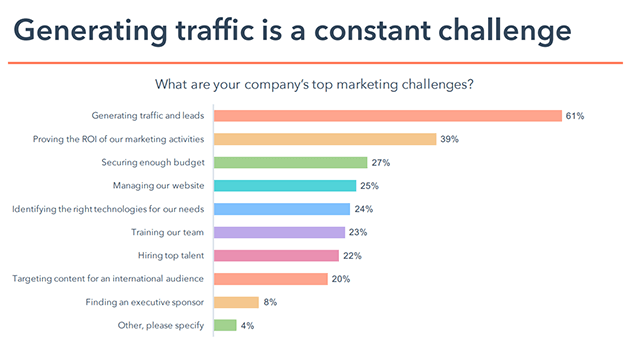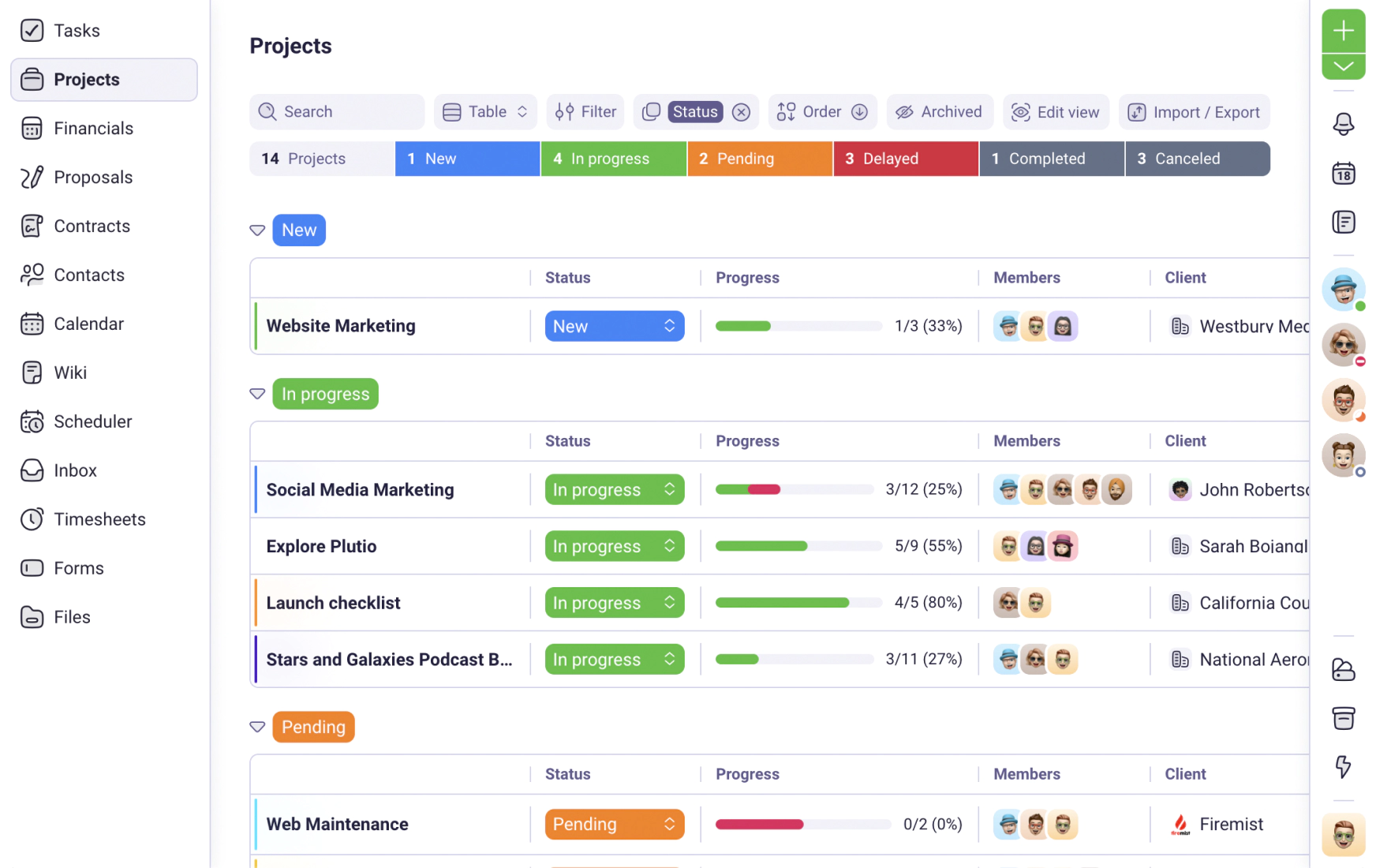We use cookies to personalise and enhance your experience.
It might surprise you to learn that more people than ever before are freelancing in their fields. In fact, a whopping 59 million freelancers worked in the US in 2020—up from 57 million in 2019.
Freelancing allows you to pursue your interests, to take on work that motivates you. It means you can set your own hours. Not a morning person? No problem—stay in bed and work later.
Even so, it’s not all sunshine and rainbows for these people. There’s less security with freelance work, and when things aren’t going well, it’s you who needs to pick up the slack.
But what’s the biggest problem? Freelancer surveys consistently find that the main issue facing them is lead generation.

This shouldn’t come as a major shock. Many freelancers experience boom-and-bust cycles at some point. It’s considered part of the gig. Yet, couldn’t things be better? Wouldn’t you like to have a reliable pipeline of work that doesn’t become overwhelming?
After all, freelancers are always searching for more management tools and strategies to be efficient. To get on the right track, you should start with your lead generation strategy.
Learning how to generate more leads—and better leads—is crucial for establishing your business.
If this all sounds like too much to handle, you’re hardly alone in feeling that way. Most freelancers struggle with lead generation when they first get started. As such, it’s a good idea to follow a few useful tips and tricks that will keep you ahead of the competition.
What is Freelance Lead Generation?
You might already be familiar with freelance lead generation, but in case you’re totally new to this, it’s how you:
“source and attract potential clients before persuading them to hire you”
Sounds easy enough, right? Well, it isn’t always.
Back in the day, you’d break out your old POTS line and start dialing, but things have changed a great deal since then. If you don’t get up to speed, your business will start to flag.
You know better than anybody which kind of client is right for you. Still, establishing contact with them and convincing them to spend cash is challenging.
So, why does lead generation cause such difficulty for freelancers?
The Problem With Freelance Lead Generation
You might be wondering why it’s such a struggle to get leads, which is fair.
Generally, freelancers struggle with lead generation because they don’t have enough time to commit to it.
You’re (hopefully) already working with some clients. However, soon enough you’ll finish their projects and be ready to step up to the next challenge. Obviously, you’re going to need to put in a shift and prospect some leads.
But how are you supposed to focus on your current projects when you have to use your time finding the next client? It’s a problem—a big problem—and one that doesn’t disappear either.
You’re going to have to prospect leads day after day, week after week, month after month. You get the picture.
This is a situation many freelancers face, but you can hold off on panicking for now. You’ll be happy to hear that there’s never been an easier time to bring in leads for a freelancer.
Rather than drowning in your overwhelming obligations, find out what you can do to raise efficiency and lighten the load.
Sure-fire Freelance Lead Generation Strategies
You know what the problem is, now it’s time for a solution.

Let’s get your ship sailing in the right direction. You’ll need to come up with a broad lead generation strategy using many channels and resources.
Even if you’re getting a steady supply of leads from one or two sources, it always makes sense to explore new avenues. Why? Because the freelance market that you’re operating in is fiercely competitive. You need every edge you can get to keep ahead of your rivals.
As such, it’s crucial to remember that you’re looking to generate more leads, yes. Yet you’re also trying to develop better quality leads and a higher conversion rate.
The strategies that follow will have a positive impact on both these considerations.
Diversify Your Approach
One mistake that so many freelancers make is that they put all their eggs in one basket. By focusing on one form of lead generation, you could miss out on opportunities elsewhere. Opportunities that might prove fruitful.
It’s not just that you’re failing to contact parties that might be receptive. It’s that if your existing strategy falls through you’ll be left in the lurch with nowhere to turn.
The answer? Diversification.
Bucketloads of lead generation channels exist, but the three biggest categories are:
- Telephone
- Social media
Using a combination of these platforms is undoubtedly the best way to generate leads sustainably.
Consider this.
A person’s receptiveness varies from one platform to the next. Some prefer contact by phone. Other people prefer to submit details online before further interactions.
Freelancers who utilize a cloud phone system or automated email software can thrive. These types of systems give you the flexibility to interact with leads seamlessly, even whilst on-the-go.
Multifaceted approaches using modern thinking mean you’re more accessible than ever. Lead generation websites, digital signage, and blogs are all viable options beyond the basics.
Give it a try. Change up your approach and give people more options. You’ll more easily connect with your audience.
Trust the Machines: Make Use of Automated Software
The big trend in lead generation is the increasing use of modern software and automation solutions. Freelancers are deciding to allow automated systems to take on the brunt of the work. Spoiler: This approach is working wonders.
Automated software is incredibly sophisticated. It allows you to connect with potential leads through email, SMS and text, and even social media.
But automation isn’t just good for cold outreach. It also allows you to prepare responses to the variable behaviors that your potential leads exhibit.
Let’s look at an example.
You set up an automated email system that fires emails out to potential leads. Despite your persuasive wording the lead fails to respond. In this case, you can set up your automated email software to send another email after a set period.
This is enormously helpful because it means you don’t have to spend hours checking back for responses or following up on dead-ends. The software does all of the heavy lifting for you.
The exact strategy that you employ with software like this is entirely down to you. You can easily readjust your communications to garner better and better results.
These systems also allow you to develop a more complete picture of your lead’s service needs. That means when you do have a call with them, your average handle time will be significantly reduced.
That’s right—you’ll have even more time available to do your actual work!
Automated lead generation increases the number of leads and the quality of leads. As you’ll receive more qualified leads, your conversion rate should shoot up as well. With results like that, you’d be crazy not to integrate this into your wider strategy.
Learn From Your Mistakes
A marketing and lead generation campaign is no picnic. It’s an ever-changing landscape that requires you to keep up with the times.
Even if your lead generation strategy was effective initially, it doesn’t mean it’ll continue that way (annoying, right?). You’ll need to keep checking your effectiveness using key performance indicators (KPIs) and data analytics.
Some people believe that KPIs are something of an industry-standard, but that’s not true at all. Actually, you should be establishing KPIs that fit with your business model and wider strategy. That’s the only reliable way of knowing if you’re performing well.
Classic KPIs for lead generation include qualified lead volume and lead conversion rate. Of course, other metrics can help you to determine what’s working and what isn’t.
Reviewing your approaches is critically important. Call monitoring software is effective at assessing your phone call strategies. Social media platforms offer data insights, and you can expect similar utility from any automated email software, too.
Using data-driven analysis alongside your KPIs, you’re better placed to see how to move ahead with your lead generation strategy.
Your communication strategy with your leads will alter their perception of you and your operation. As a result, communication needs to be central in your broader strategy.
Limitless Leads Await
Setting out a lead generation strategy is a daunting prospect for freelancers. It’s very scary at first. But by following the principles laid out above, you’re going to get the results you’re looking for.
Remember to:
- Establish your presence across multiple channels to reach leads wherever possible.
- Utilize automated systems to ferret out interest and encourage engagement.
- Continue to reassess your lead generation strategy using KPIs for better results.
These fundamental guidelines will steer you to success—now go get those leads!
Have you tried Plutio yet?
The only app you need to run your business and get work done.
Try Plutio for FREESupercharge your business
The complete toolkit to run your business
The intuitive all-in-one solution to manage and collaborate on projects, share files, build forms, create proposals, get paid, and automate your workflow.
No credit card required


